TARGETED FILAMENTOUS WHO-FPPL
There are three targeted filamentous WHO-FPPL that we concern, which are Fusarium spp., Eumycetoma causative agents, and Mucorales. In this illustration, we used the isolate from collection culture the Department of Microbiology, Faculty of Science, Chulalongkorn University.
For preparing this identification, we used the Slide Culture Technique. Please check on the linked page.
Fusarium spp.
The target species in Fusarium spp. are listed in the Figure 1:
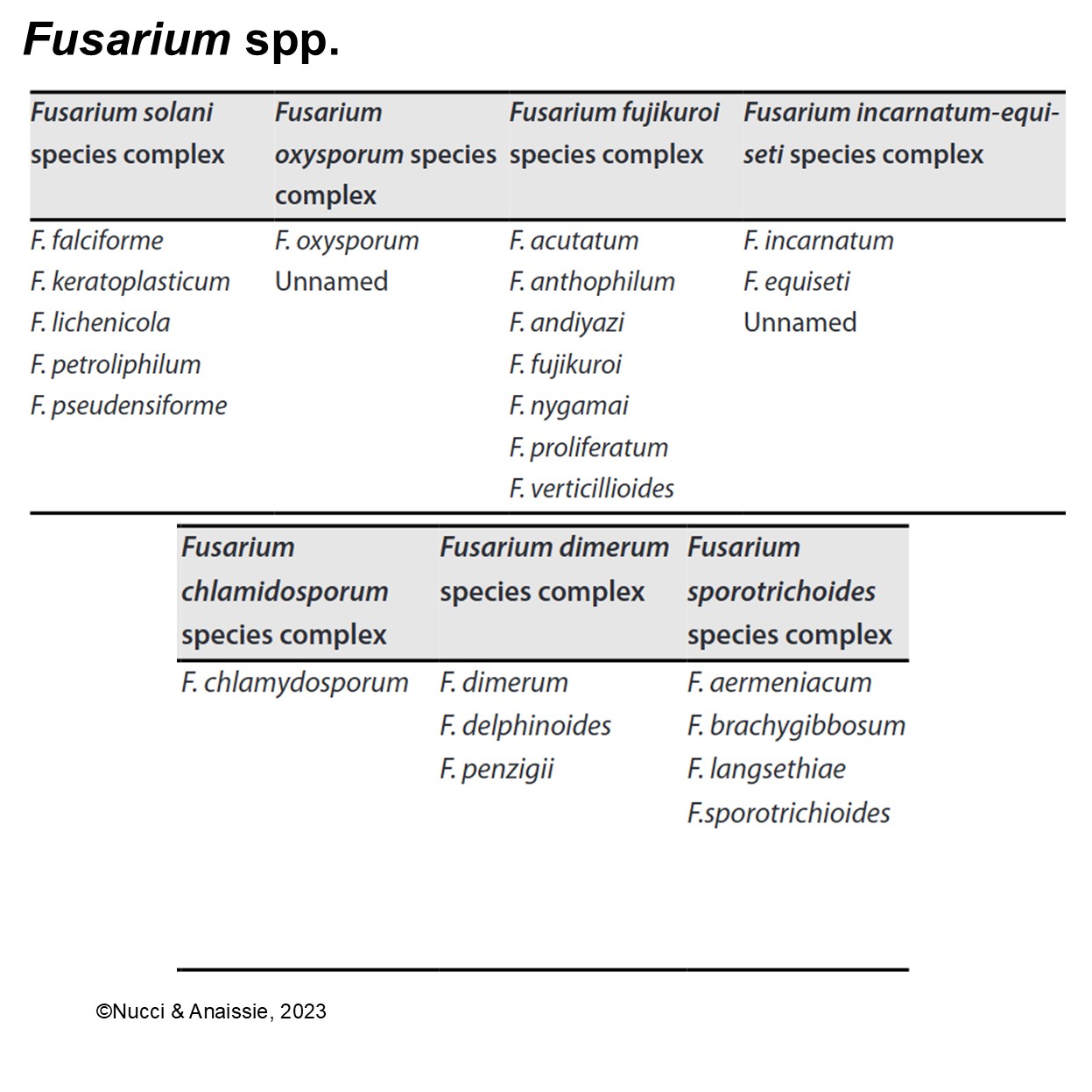
Here is the genera included in Fusarium spp. that we have in Nat Pombubpa Lab:
1. Fusarium oxysporum f. sp. lycopersici DOAC 0874 – MSCU 0232 on PDA medium (Figure 2).
Fusarium oxysporum f.sp. lycopersici is a filamentous fungal pathogen responsible for Fusarium wilt in tomato plants (Solanum lycopersicum), causing significant global crop losses. It invades the plant’s vascular system, leading to wilting and is known for its resilience and persistence in soil.
Characteristics
Morphology: Produces violet to white colonies on most media; lacks pigment on King’s B medium.
On PDA: Forms dense, cottony or woolly mycelia. Colony color transitions from white to violet or light purple with age. The reverse side shows reddish or purplish pigmentation.
Growth: Rapid growth at 25–30°C, often covering plates within days.
Spore Production: Produces macroconidia (sickle-shaped, multiseptate), microconidia (oval or ellipsoid, single- or two-celled), and sometimes chlamydospores.
Classification
Kingdom: Fungi
Phylum: Ascomycota
Class: Sordariomycetes
Order: Hypocreales
Family: Nectriaceae
Genus: Fusarium
Species: Fusarium oxysporum
Forma Specialis: lycopersici
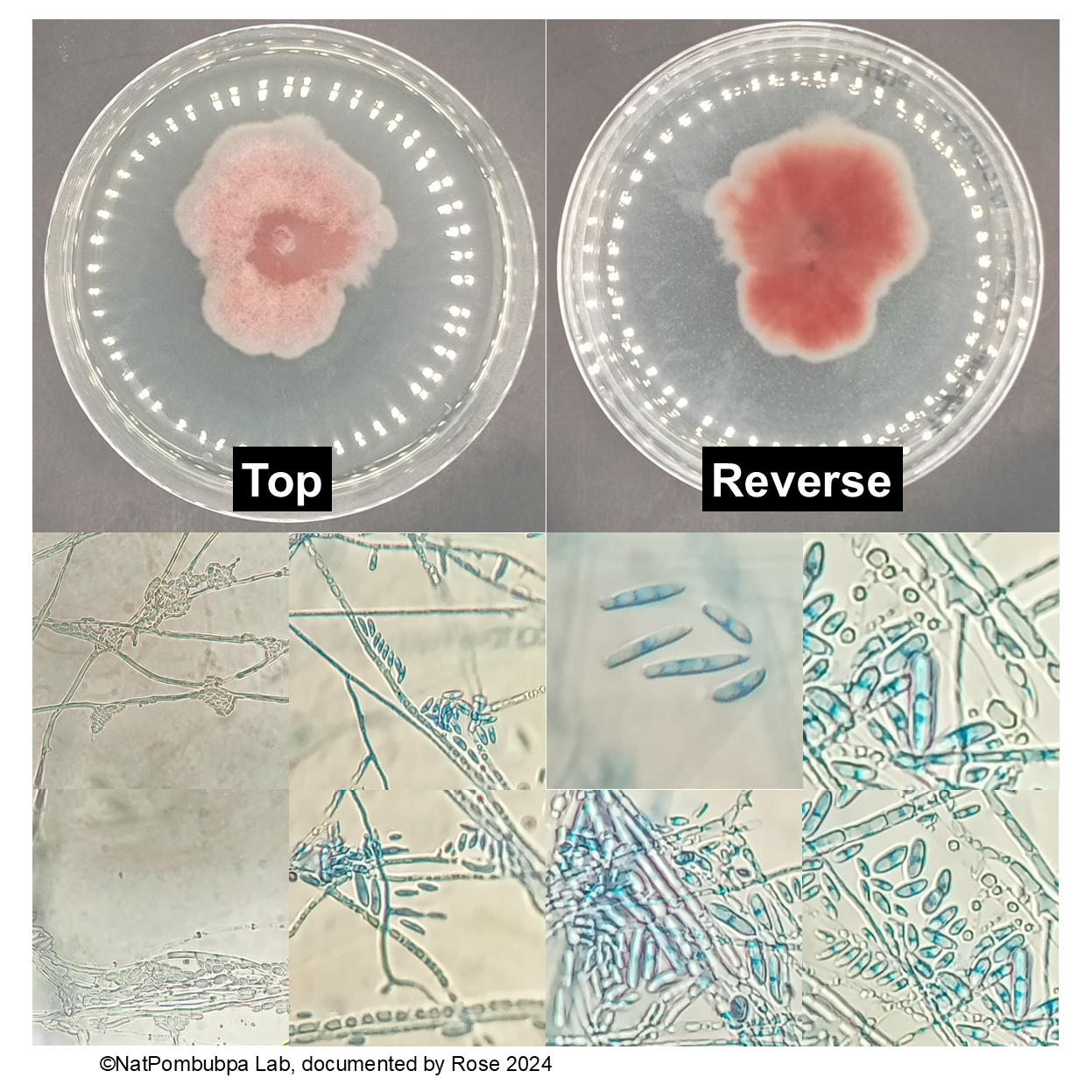
Reference for Fusarium spp.
Eumycetoma causative agents
The target genera included in Eumycetoma causative agents are listed in the Figure 3:
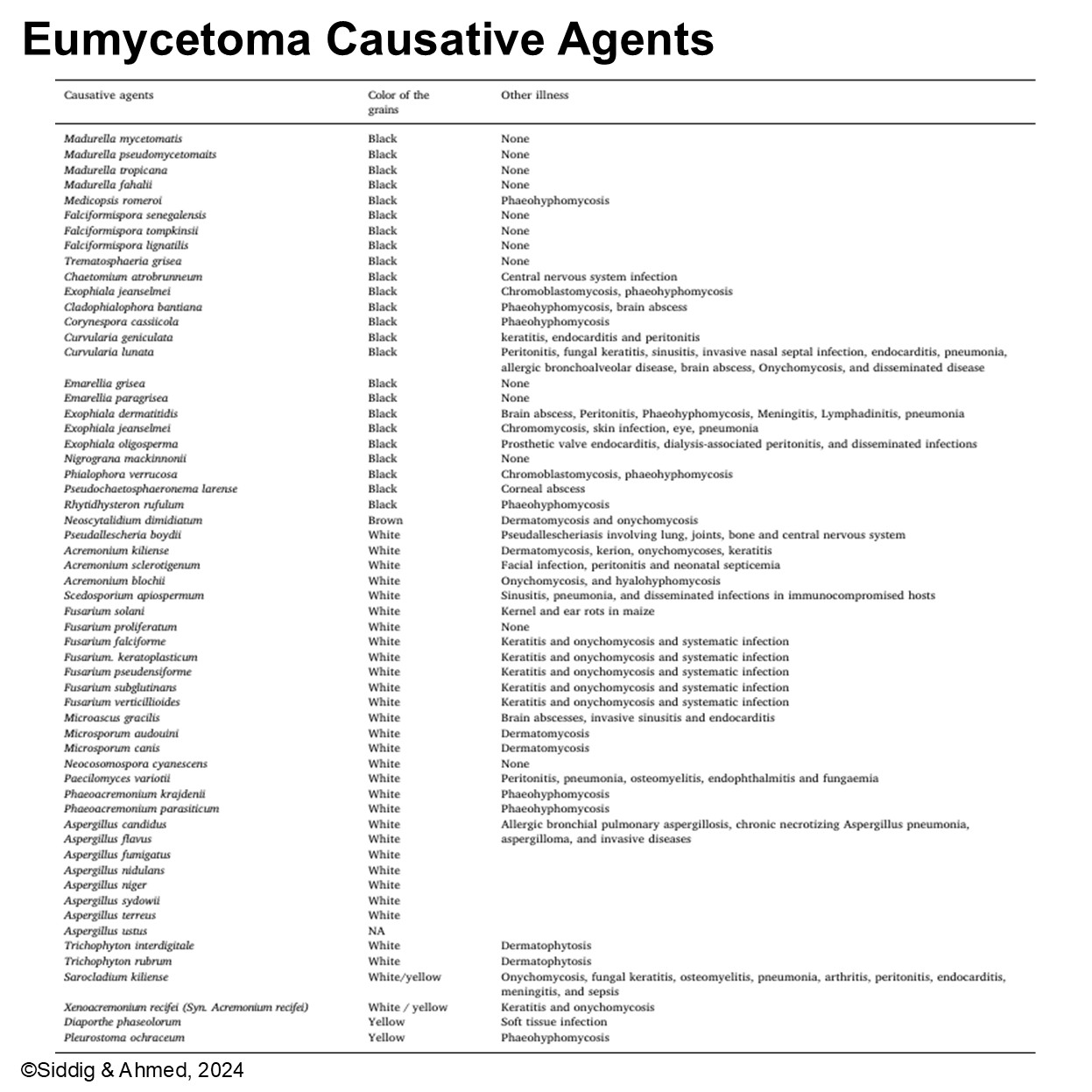
Reference for Eumycetoma causative agents
Mucorales
The target genera included in the Mucorales order are listed in the Figure 4:
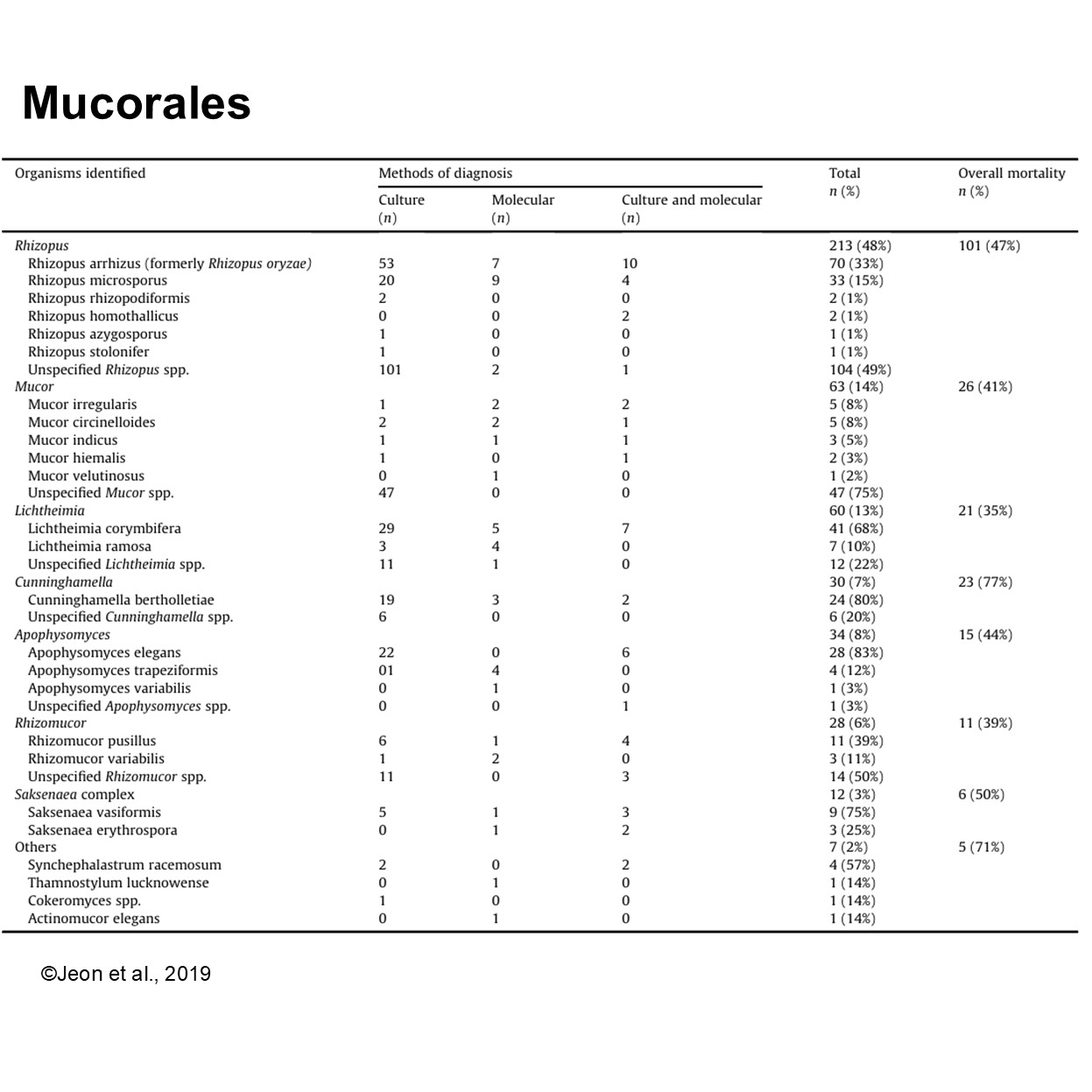
Here are examples of Mucorales representatives that we have in Nat Pombubpa Lab:
2. Mucor rouxii(+) – MSCU0009 on PDA medium (Figure 5).
Mucor rouxii is a filamentous fungus belonging to the Mucorales order, commonly found in soil and decaying organic matter. It is known for its dimorphic nature, exhibiting both filamentous and yeast-like growth forms depending on environmental conditions. While primarily saprophytic, Mucor rouxii can act as an opportunistic pathogen, particularly in immunocompromised individuals, causing infections such as mucormycosis.
Characteristics
Morphology: On solid media, Mucor rouxii forms fast-growing, cottony colonies that are initially white and may turn grayish or brownish with age. In liquid media or anaerobic conditions, it can display yeast-like growth.
On PDA: Produces dense, fluffy colonies that grow rapidly, typically filling the plate within a few days under optimal conditions (25–30°C).
Spore Production: Produces sporangia containing sporangiospores, which are smooth-walled and spherical to ellipsoidal. Sporangia are borne on long sporangiophores with a characteristic columella at the base.
Growth Conditions: Prefers temperatures between 25–30°C and thrives in nutrient-rich environments.
Classification
Kingdom: Fungi
Phylum: Zygomycota
Class: Zygomycetes
Order: Mucorales
Family: Mucoraceae
Genus: Mucor
Species: Mucor rouxii
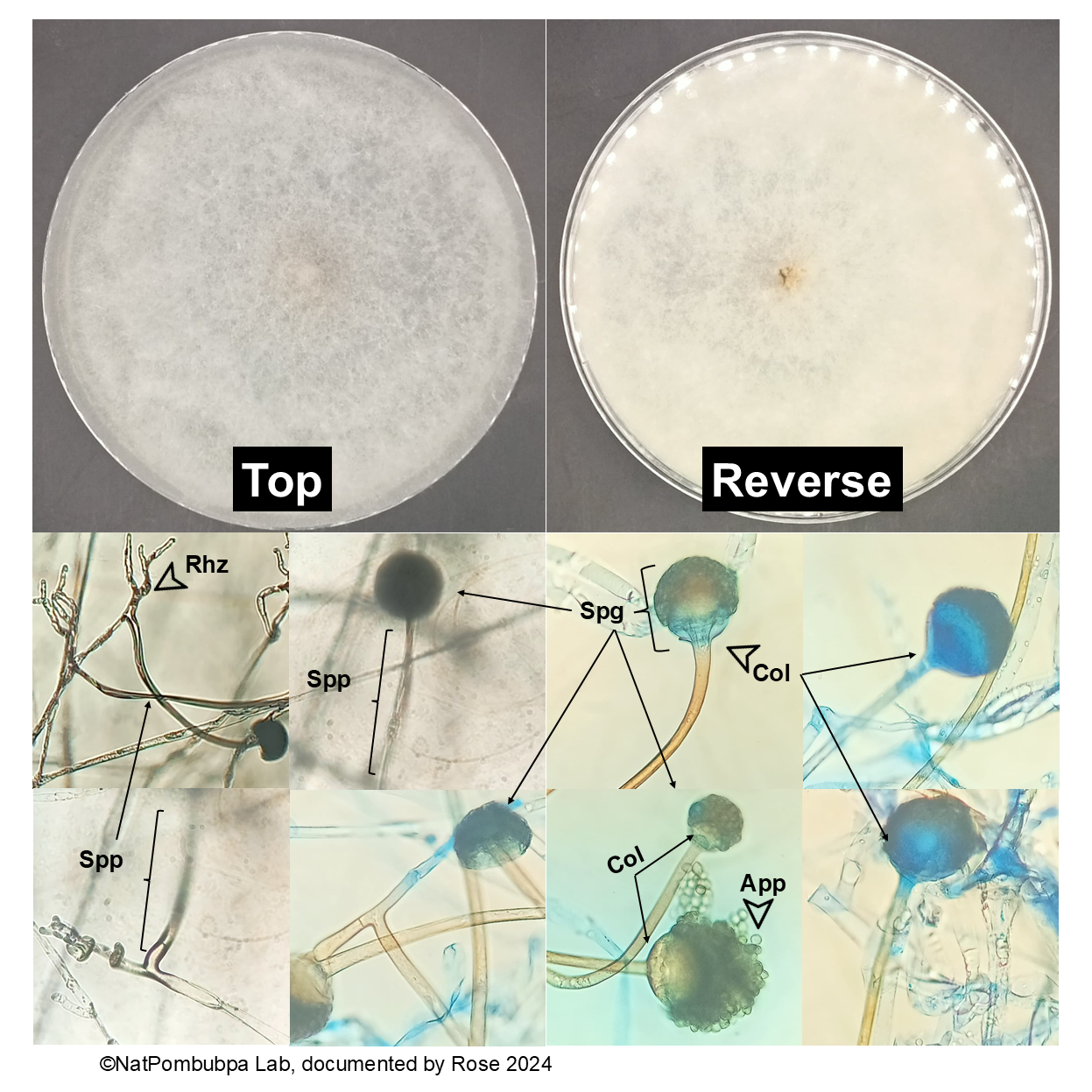
3. Rhizopus sp. – MSCU0015 on PDA medium (Figure 6).
Rhizopus species are filamentous fungi belonging to the Mucorales order, widely distributed in soil, decaying organic material, and various foods. These fungi are known for their saprophytic lifestyle and rapid growth, making them significant decomposers. However, some species, such as Rhizopus oryzae and Rhizopus arrhizus, are opportunistic pathogens, causing mucormycosis in immunocompromised individuals.
Characteristics
Morphology: Rapidly growing colonies with a cottony or fluffy texture, typically white at first, turning grayish to black as sporangia mature. The reverse of the plate may show a pale to dark coloration, depending on the medium.
On PDA: Forms dense, fast-spreading colonies that can cover the plate within 24–48 hours under optimal conditions.
Spore Production: Produces sporangia at the tips of sporangiophores, which are long, unbranched, and terminate in round, dark sporangia containing sporangiospores. Rhizoids (root-like structures) are present at the base of the sporangiophores, a distinguishing feature.
Growth Conditions: Thrives at 25–37°C, with rapid growth in high humidity and nutrient-rich environments.
Pathogenicity: Causes mucormycosis, particularly rhinocerebral, pulmonary, and cutaneous infections, primarily in individuals with diabetes, neutropenia, or trauma.
Classification
Kingdom: Fungi
Phylum: Zygomycota
Class: Zygomycetes
Order: Mucorales
Family: Mucoraceae
Genus: Rhizopus
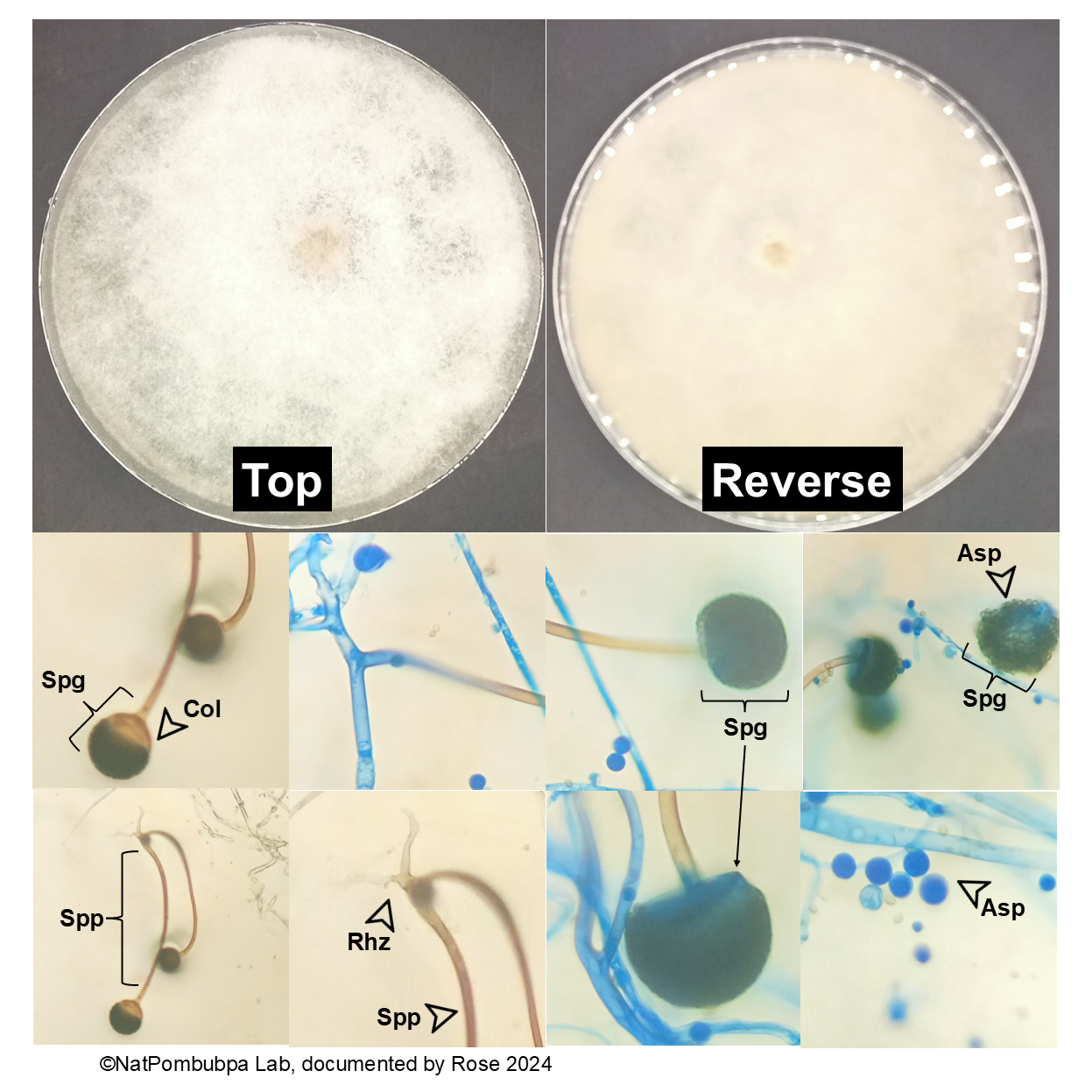
Reference for Mucorales
